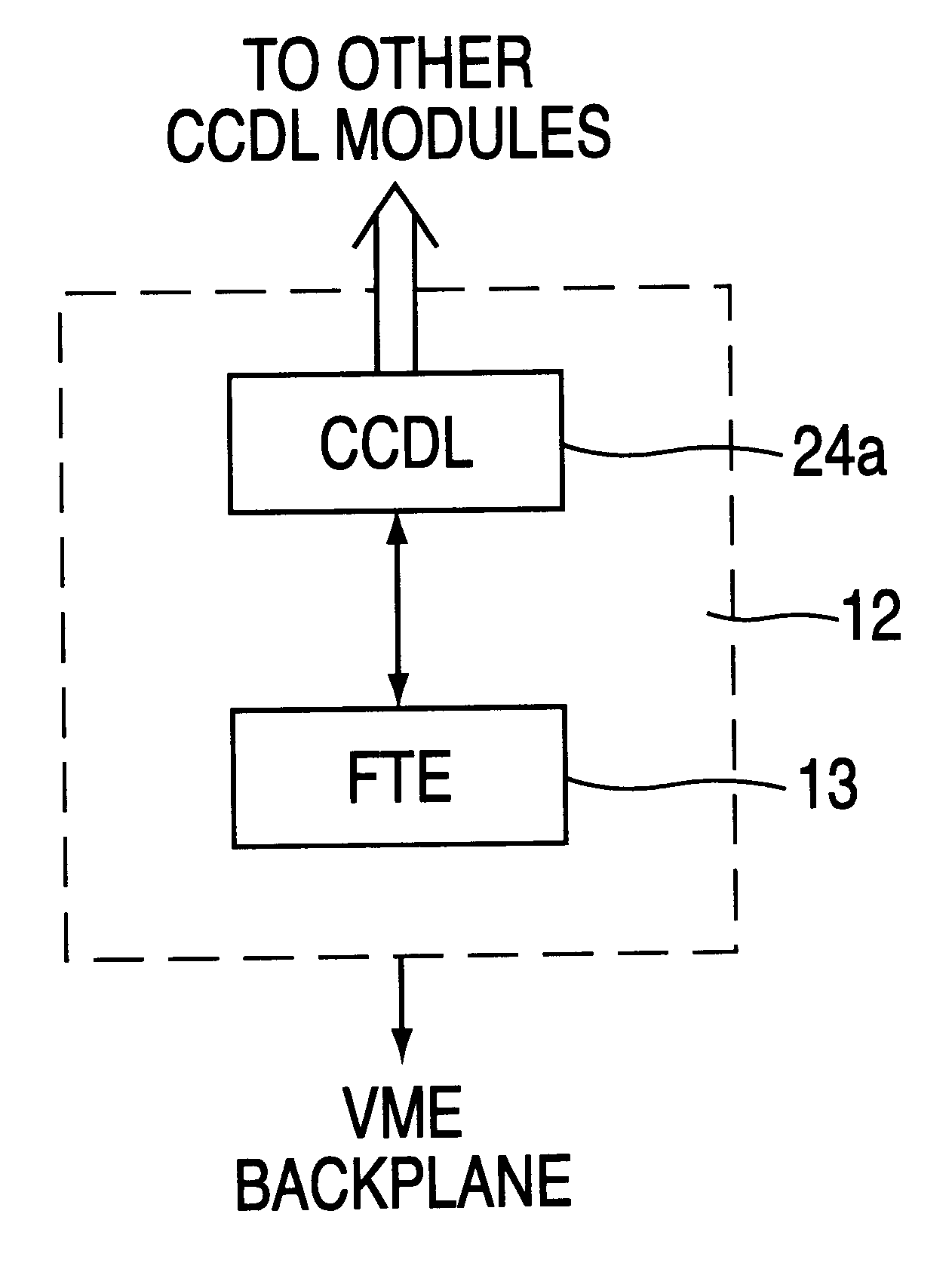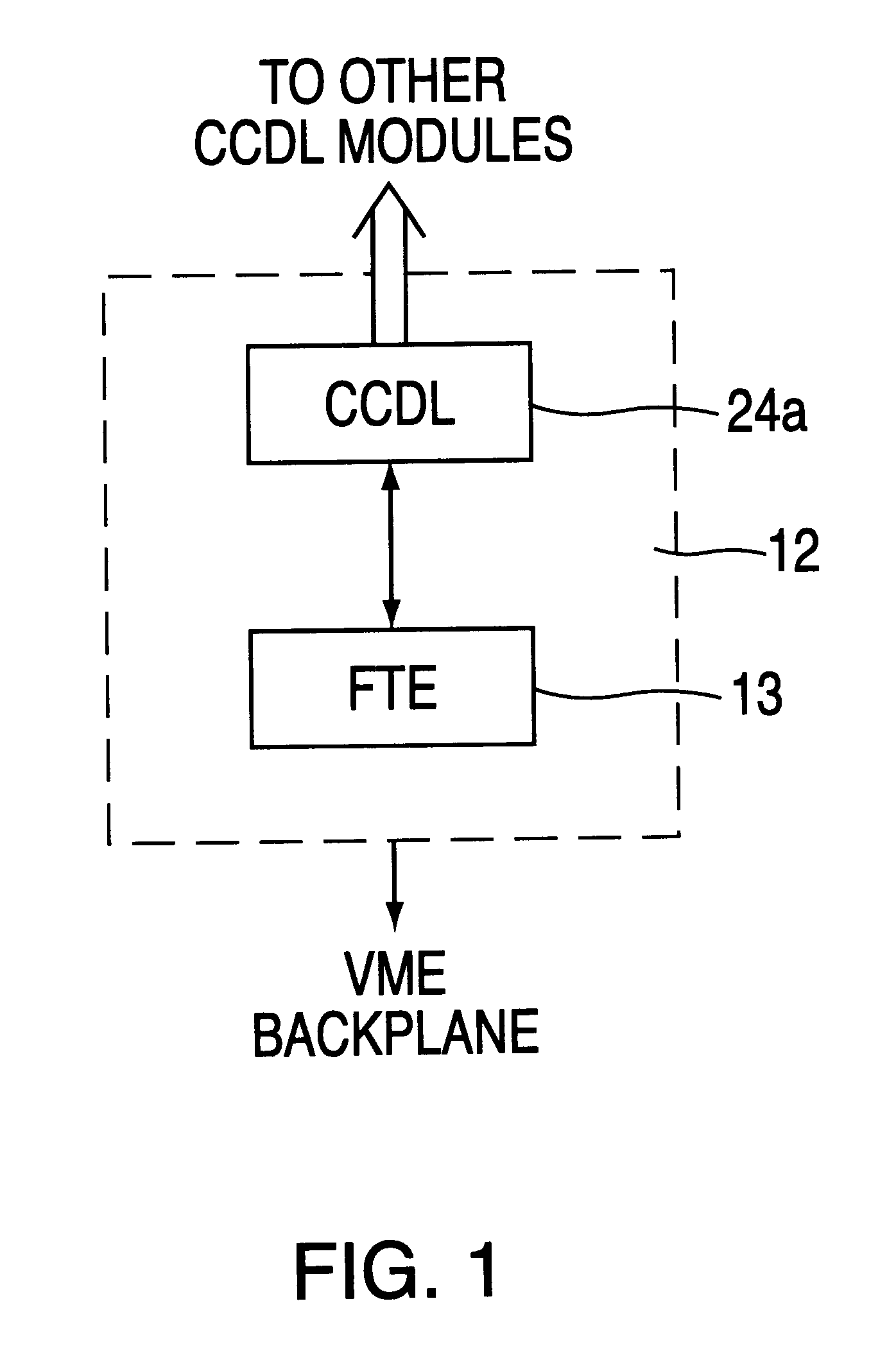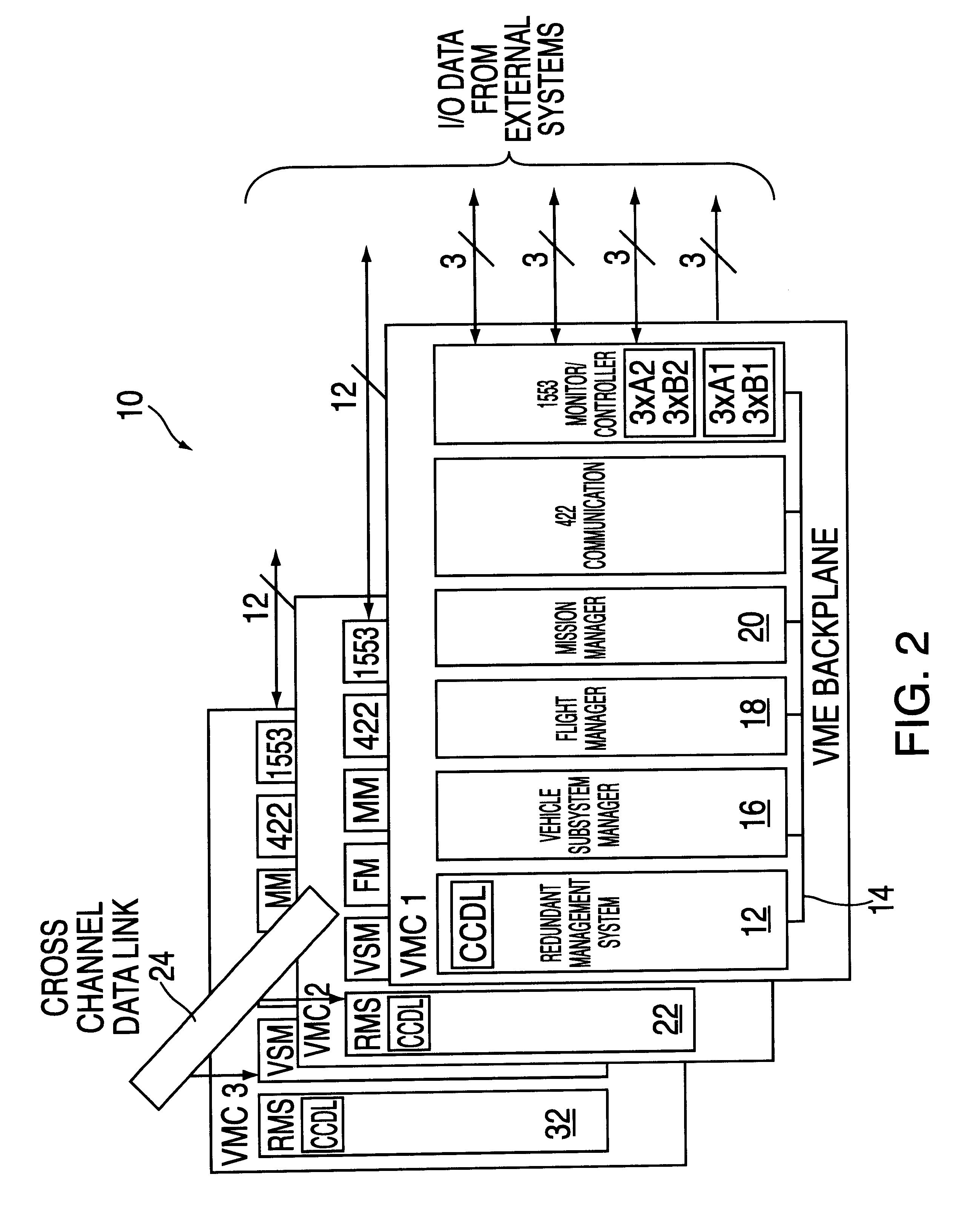Method and apparatus for managing redundant computer-based systems for fault tolerant computing
a computer-based system and fault-tolerant technology, applied in the field of computing environments, can solve problems such as the existence of faults and errors in the system, the reduction of the overall design complexity of the system at hand, and the complexity of the system with significant flexibility
- Summary
- Abstract
- Description
- Claims
- Application Information
AI Technical Summary
Benefits of technology
Problems solved by technology
Method used
Image
Examples
Embodiment Construction
As previously mentioned, the RMS has two subsystems, Fault Tolerant Executive (FTE) and Cross-Channel Data Link (CCDL). The FTE consists of five modules (FIG. 5): 1) a Synchronizer 80; 2) a Voter 58; 3) a Fault Tolerator (FLT) 84; 4) a Task Communicator (TSC) 46; and 5) Kernal (KRL) 52. The functions of these modules will be described in the foregoing.
SYSTEM SYNCHRONIZATION
The Synchronizer (SYN) 80 (FIG. 5) establishes and maintains node synchronization for the system. It is required that, at any time, each individual RMS must be in, or operate in one of five states: 1)POWER_OFF; 2) START_UP; 3) COLD_START; 4) WARM_START; and 5) STEADY_STATE. FIG. 3 shows a state transistion diagram of an individual RMS and its five states.
POWER_OFF (PF) is the state when the RMS is non-operational and the power source of the associated computer is off for any reason. When the RMS is powered-up, the RMS unconditionally transitions to START-UP.
START_UP (SU) is the state after the computer has just be...
PUM
 Login to View More
Login to View More Abstract
Description
Claims
Application Information
 Login to View More
Login to View More - R&D
- Intellectual Property
- Life Sciences
- Materials
- Tech Scout
- Unparalleled Data Quality
- Higher Quality Content
- 60% Fewer Hallucinations
Browse by: Latest US Patents, China's latest patents, Technical Efficacy Thesaurus, Application Domain, Technology Topic, Popular Technical Reports.
© 2025 PatSnap. All rights reserved.Legal|Privacy policy|Modern Slavery Act Transparency Statement|Sitemap|About US| Contact US: help@patsnap.com



